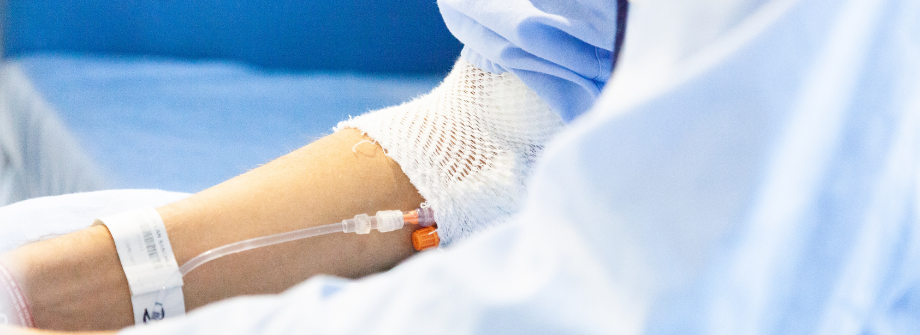
By Emanuele Angelucci, Haemoglobinopathies Working Party Chair & Valeria Pinto - UO Ematologia e Terapie Cellulari, IRCCS Ospedale Policlinico San Martino, Genova, Italy
Transfusion dependent β‐thalassemia (β‐TDT) and sickle cell disease (SCD) are worldwide distributed hereditary red cell disorders with still limited therapeutic options. Allogeneic HSCT remains the only curative option for these patients related to the availability of hemopoietic cells donor. The number of people living with SCD globally increased and was estimated in 7.74 million (6.51-9.2) in 2021. More than 25,000 infants are born with transfusion‑dependent β‐thalassemia (β‐TDT) each year and more than 55,000 surviving patients have TDT.
Now we can offer a novel curative approach ideally to all patients with SCD and β-TDT, providing a long-term, durable therapy. Gene therapy gives hope of providing more targeted and effective treatments, especially for individuals with rare diseases.
The Scientific community and patients are very excited about the recent approval (on Dec. 8, 2023) of the first two cell-based gene therapies to treat SCD from the Food and Drug Administration (FDA). Exagamglogene autotemcel (Casgevy, Vertex) and Lovotibeglogene autotemcel (Lyfgenia, Bluebird Bio) are approved one-time, single-dose therapies for SCD patients ages 12 and older with recurrent vaso-occlusive crises (VOCs) in USA. Exagamglogene autotemcel employs CRISPR-Cas9 genome editing technology increasing the production of fetal hemoglobin (HbF) to facilitate oxygen delivery and prevent red blood cell (RBC) sickling. Lovotibeglogene autotemcel uses a lentiviral vector to add a functional gene that enables production of HbAT87Q which functions similarly to hemoglobin A. FDA previously approved lovotibeglogene for the treatment of adult and pediatric patients with β-thalassemia who require regular red blood cell transfusions (on Aug. 17, 2022).
First approval of exagamglogene autotemcel was made from the United Kingdom’s Medicines and Health Care Products Regulatory Agency (MHRA) on Nov. 17, 2023 for SCD and transfusion‑dependent β‐thalassemia in patients ages 12 and older, who are eligible for a stem cell transplant but lack a donor. Then, Bahrain was the second country to approve gene editing on Dec. 5, 2023 with the same criteria.
More recently (on Dec. 15, 2023), the European Medicines Agency (EMA) approved Exagamglogene autotemcel for the treatment of β‐TDT and severe SCD in patients ages 12 and older for whom haematopoietic stem cell transplantation is appropriate and a suitable donor is not available.
The FDA and EMA approvals for SCD e β‐TDT were based on the results of clinical trials worldwide.
FDA and EMA approved exagamglogene autotemcel based on data from an ongoing study of 44 adult and adolescent SCD patients with a history of VOCs. Among 31 patients with sufficient follow-up time to be evaluable, 29 (93.5%) achieved freedom from severe VOC episodes for at least 12 consecutive months during a 24-month follow-up period. In the setting of β‐TDT, 42 adult and adolescent patients received a single dose and 39 were transfusion-free for at least one year. FDA noted that patients receiving exagamglogene autotemcel will be followed in a long-term study to evaluate its safety and effectiveness.
FDA approved lovotibeglogene autotemcel for SCD based on data from a single-arm, multicenter study of adult and adolescent patients with SCD and history of VOCs. Twenty-eight (88%) of 32 patients achieved a complete resolution of VOCs between 6 and 18 months after treatment. FDA stated that patients should have lifelong monitoring for hematologic malignancies due to the occurrence of hematologic malignancy in two patients treated with an earlier version of Lovotibeglogene autotemcel using a different manufacturing process and transplant procedure.
Scientific enthusiasm and real practice of gene therapy together with patients’ expectation may be halted by different factors as the limited number of medical centers to provide gene therapy, the company’s capacity of providing the product and the cost of the procedure.
References
GBD 2021 Sickle Cell Disease Collaborators. Lancet Haematol. 2023 Aug;10(8):e585-e599.
Kattamis A et.al .Eur J Haematol. 2020 Dec;105(6):692-703
Frangoul H et al. N Engl J Med 2021; 384:252-260
Frangoul H et al. Blood (2022) 140 (Supplement 1): 29–31
Locatelli F et al. Hemasphere. 2023 Aug; 7(Suppl ): e8473180
Kanter J et al. N Engl J Med 2022; 386:617-628
Locatelli F et al. N Engl J Med. 2022 Feb 3;386(5):415-427